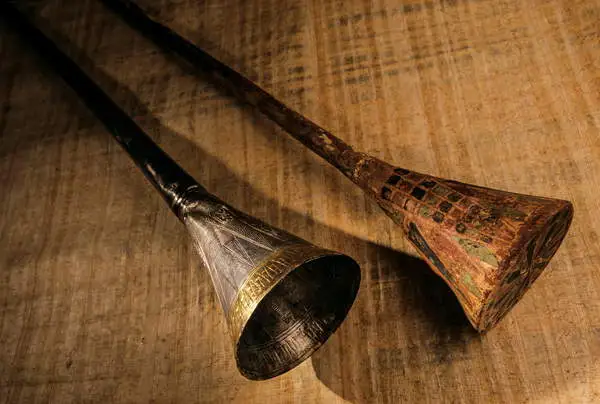Among the treasures unearthed from the tomb of Tutankhamun, few relics evoke the grandeur and mystique of ancient Egypt quite like his military trumpets. These instruments, crafted from metal sheets and adorned with gold, stand as testament to the sophistication of Egyptian craftsmanship and the reverence for music in their culture.

A Rare Artifact
The trumpets of Tutankhamun are among the rarest examples of their kind, with only three known to have survived from ancient Egypt. Fashioned from metal sheets covered in lavish gold, these trumpets were not merely functional instruments but symbols of power and prestige, often used in ceremonial and military contexts.

Exquisite Detailing
Each trumpet is a masterpiece of craftsmanship, with intricate detailing that speaks to the skill and artistry of ancient Egyptian artisans. The mouthpiece, shaped like a cylindrical sleeve with a silver ring, is fixed to a tube that produces the instrument’s distinctive sound. Adorning the exterior of the bell is a panel depicting Tutankhamun himself, resplendent in the Blue Khepresh Crown and holding the crook scepter “Heka.” Before him stands a shrine containing the mummified figure of the god Ptah, a poignant symbol of divine protection and guidance.

Cultural And Symbolic Significance
In ancient Egypt, music played a central role in religious ceremonies, military processions, and royal celebrations. Trumpets were not only instruments of war but also instruments of divine communication, used to invoke the gods and honor the pharaoh. The depiction of Tutankhamun and Ptah on these trumpets highlights their dual significance as symbols of earthly and divine power, bridging the mortal realm with the realm of the gods.
